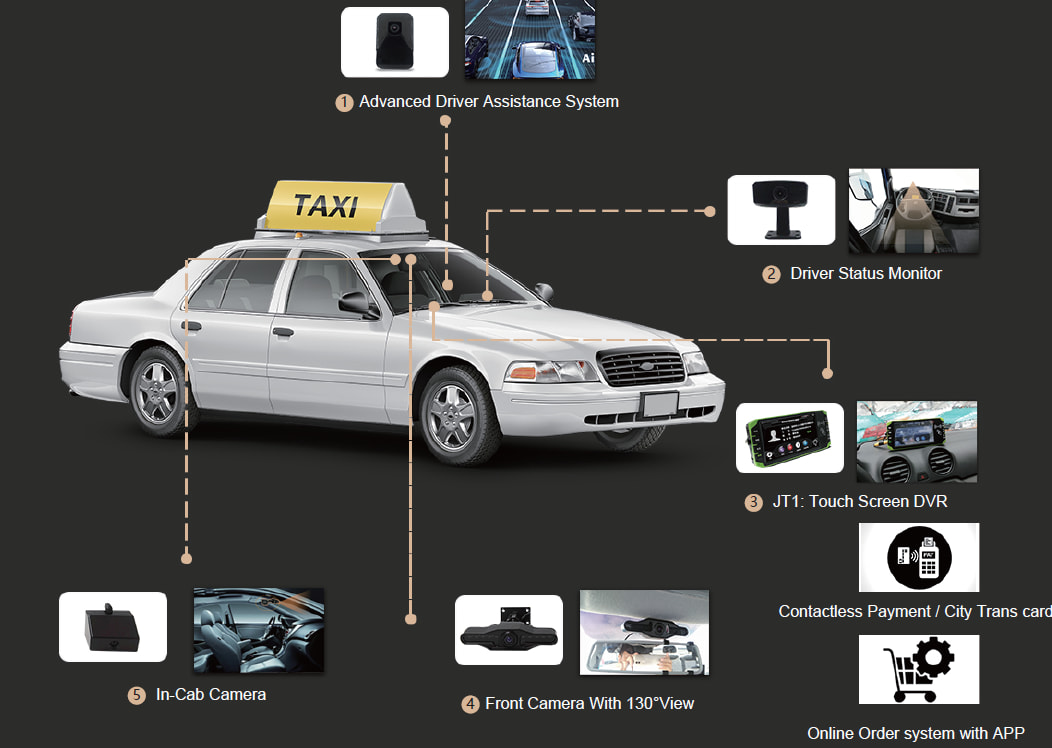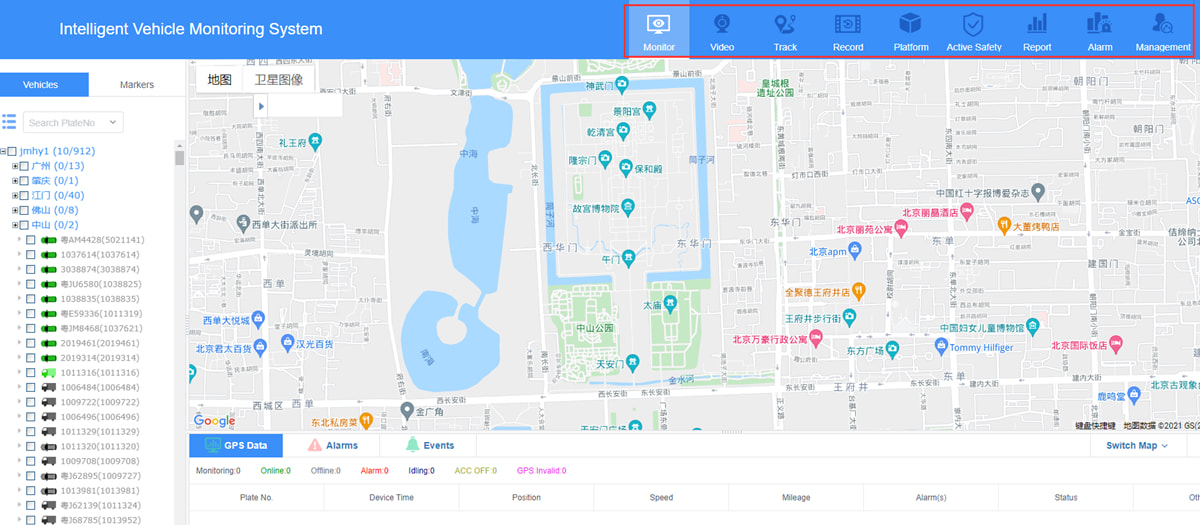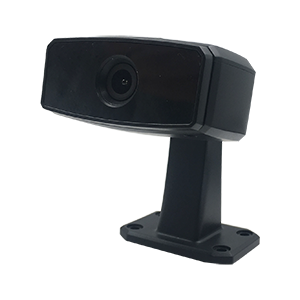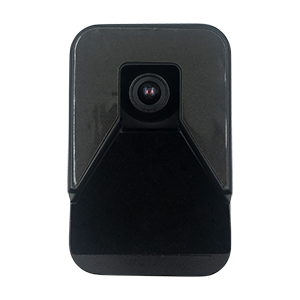Overview of the Taxi Industry
In numerous nations, taxis remain an indispensable component of urban transportation, and worldwide investments in this sector are consistently on the rise. Grasping the numerous challenges that confront the present-day taxi sector, our objective is to unveil a holistic all-in-one solution.
JT1 MDVR
Unlike various other vehicle categories, taxis exhibit relatively constrained requirements when it comes to camera channels. Our assessment suggests that employing 2 to 3 cameras would suffice, ensuring comprehensive footage coverage to enhance safety. To cater to taxi-specific needs, we've developed the specially tailored DVR-JT1 (Explore JT1 here). This touch screen DVR accommodates up to 4 channel cameras, supporting resolutions of up to 1080P AHD and IPC. Furthermore, ICARVISIONS has ingeniously crafted a dual lens camera kit exclusively for taxis. Understanding the distinct demands of this industry, the front camera provides an expansive 130-degree wide-angle view for drivers, and both cameras seamlessly affix to the car's windshield.

What sets the JT1 apart is its integrated Android system, which opens the door to a range of unique features. This device supports a diverse array of apps, including an online ordering system, fleet dispatch management, a call center app, and navigation tools. Among its most standout attributes is the built-in contactless card reading system, offering a competitive edge. This functionality empowers customers to make swift payments using credit cards or city bus cards. It's important to note that for this feature to be operational, seamless integration with the local banking system is a prerequisite.
A comprehensive guide for Taxi Surveillance and Mobile DVR
ADAS and DSM function
In the realm of telematics, Artificial Intelligence (AI) holds a pivotal role, substantially bolstering both driver and passenger safety. Notably, within the scope of JT1, we offer customers the flexibility to opt for Advanced Driver Assistance Systems (ADAS) and Driver State Monitoring (DSM), both utilizing specialized cabin-facing cameras. One camera is positioned to capture the road ahead, while the other focuses on the driver. ADAS performs comprehensive object detection on elements like preceding vehicles, pedestrians, traffic signals, and obstacles along the road. On the other hand, DSM focuses primarily on the driver, analyzing behavior for any prohibited actions. Both ADAS and DSM promptly trigger alarms, transmitting snapshot or footage clips to the customer's server, thereby ensuring the central monitoring office remains informed. These robust functionalities harness the potency of our AI algorithms embedded within the Mobile DVR.
| DSM (JA-MC938 V2 / JA-MC921) | |
| Yawning Detection |
| Eyes Closing Detection | |
| Smoking Detection | |
| Making Phone Calls Detection | |
| Distraction Detection | |
| Driver Absence Detection | |
| Camera Blocked Detection | |
| Wearing Glasses Detection | |
| ADAS (JA-MC920) | |
| Lane Departure Warning |
| Safe Distance Warning | |
| Forward Collision Warning | |
| Pedestrian Collision Warning | |
Beyond Advanced Driving Assistance Systems (ADAS) and Driver State Monitoring (DSM), the JT1 boasts a plethora of remarkable features poised to elevate the standard of taxi services. Notably, it encompasses Advertising Display Management, recognizing that onboard advertisements can significantly boost revenue within the taxi industry. Typically positioned atop vehicles or at the back of front seats, taxi advertising displays play a pivotal role. With the JT1, these displays can be effectively managed through a customized app, even facilitating interactive engagement between passengers and advertisements. Building upon this capability, ICARVISIONS also presents a cutting-edge 1.01-inch touch screen tablet model that can be securely mounted on the back of front seats.
Concerning the JT1, this DVR device seamlessly integrates with ICAR's server and telematics service infrastructure. Within the domain of taxi fleets, we've established a dedicated segment for fleet management, encompassing functions such as taxi orders, driver information, and route planning. Users can conveniently access the Client interface through both web portals and mobile applications.

We employ these measures to better manage our taxi fleet
Smart Alerts: ADAS and DSM provide timely warnings, encouraging drivers to adhere to safe driving practices, ensuring the safety of both drivers and passengers. Simultaneously, alarm information is uploaded to the Intelligent Vehicle Monitoring System (IVMS), enabling the central monitoring office to stay informed at all times.
GPS Navigation: The advanced GPS navigation system in the JT1 MDVR optimizes route planning and reduces travel time. This not only enhances passenger satisfaction but also helps in cost savings.
Vehicle Tracking: Utilizing GPS tracking allows for precise vehicle location, which is invaluable for vehicle safety, dispatching, and management.
Video and Audio Recording: All video and audio automatically start recording when an order begins, providing irrefutable evidence for event investigations.
Emergency Response: Emergency buttons are installed in taxis to provide remote assistance immediately in the event of accidents or security threats. Passengers should feel safe while using our services.
Payment Options: We offer multiple payment options, including payment apps and credit card payments, to cater to different customer preferences.
Customer Feedback: At the end of each ride, we encourage passengers to rate their experience using an evaluation device. Evaluation results are also uploaded to the IVMS platform, with positive feedback serving as recommendations and negative feedback highlighting areas for improvement.
In conclusion, effective taxi fleet management requires a multifaceted approach, encompassing safety, customer satisfaction, technological advancements, and sustainable practices. By implementing these strategies, taxi fleet operators can maintain competitiveness and thrive in the rapidly evolving transportation landscape.

 Icarvisions.com
Icarvisions.com-300.png)


 Español
Español português
português 简体中文
简体中文 繁體中文
繁體中文 Deutsch
Deutsch Français
Français 日本語
日本語 한국어
한국어 بالعربية
بالعربية TÜRKÇE
TÜRKÇE русский
русский English
English
Contact Us
Questions or comments? Please fill out the form below, send a quick message, or call us. We love to hear from you!